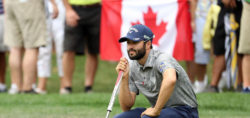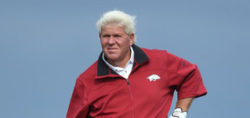- The first is obvious and one that will no doubt resonate with all of you: Slow play. It is the one thing that affects me most during an event. Everyone has a natural pace, so some people are just naturally slow in everything they do. My father is one of those. But even if that is the case, there is – at least to me – little excuse for playing golf slowly. If you do all the little things between shots quickly, you can almost take as long as you want over a shot and not fall behind.
- On Tour, the most frustrating aspect of slow play is being ready to hit, then looking over to see the guy with the honour just about to start his pre-shot routine. In other words, he has been doing something else entirely at a time when he should have been working out his yardage and figuring what club he needs to use. It is just so thoughtless and selfish. And it drives me nuts.
- I get that some players can have trouble taking the club away from the ball – Kevin Na, Sergio Garcia and Ben Crane spring to mind. And I have sympathy with such a problem. But still. It is relatively easy to get to that point quickly – even if you then struggle to start
the backswing. - Architecturally, my biggest pet peeve is what I call “double hazards.” For example, a fairway bunker directly behind a tree. That sounds ridiculous. But I see it so often, even on “great” courses where a tree planted 40-years ago has grown to be simply inappropriate. Valderrama in Spain has a few of those.The idea of any hazard is to test the recovery skills of players. But put a tree in front of that hazard and you bring everyone down to the same level. Everyone is reduced to chipping out sideways. When I see that happening I always wonder why the bunker and tree are not replaced by a small water hazard, where you take a one-shot penalty and move on. That is, in effect, what has been created by “doubling” the bunker and the tree. So yes, have a tree. Or a bunker. But not both.
- I don’t like to see too many tees on any hole. There should be just a couple of tees, three at most. Front, middle and back. That covers every level of player. Besides, if in doubt tee-off wherever you want, from the place you think you will have the most fun.Speaking of fun – or lack of it – a bad short par-4 is something else I never like to see. A good short par-4 is one of the most pleasurable things on any course. That or a short par-3. I have never heard anyone complain about a hole being too short. But everyone complains when a hole is too long. Golf is inherently hard. On a flat piece of land with no hazards, the game can still be difficult. The 18th hole on the Old Course at St. Andrews is proof of that.
- Sadly, most of the short par-4s I see are not short enough. Too often, the architect falls into the trap of trying to make a hard par-4 that is also short. Yes, they are drivable. But the lay-up is harder than the drive. So everyone ends up going for the green in one. Then it’s all about luck. If you get fortunate, you make par or birdie; if you don’t, you make par or bogey. There is no real fun involved in any of that.
- Golf today is more and more about putting and less about ball-striking. Especially at the elite level, who wins and loses is almost all down to putting, which is wrong. That’s why the challenge of links golf is so great. Golf at the seaside balances the importance of the two main aspects of the game.
Tour Pro Ogilvy: These Take The Fun Out Of Golf

Tour pro Geoff Oglivy is universally lauded as one of the more astute players. The Aussie’s golf architectural firm just finished the great Little 9 renovation at Shady Oaks CC in Fort Worth (trust me, its awesome). He also has a handle on what golf needs to tweak in order for the game’s participation to grow and prosper.
Oglivy posts what unfortunate items are adversely affecting the game. More importantly, he offers solutions.






